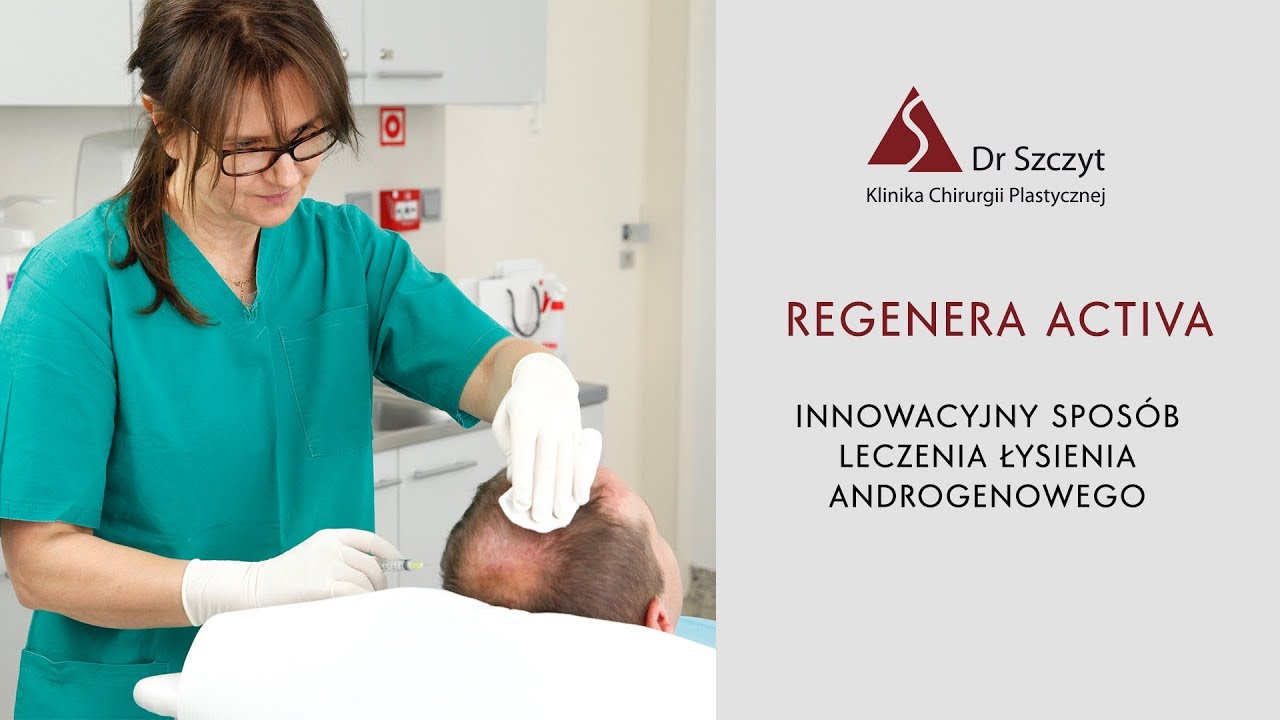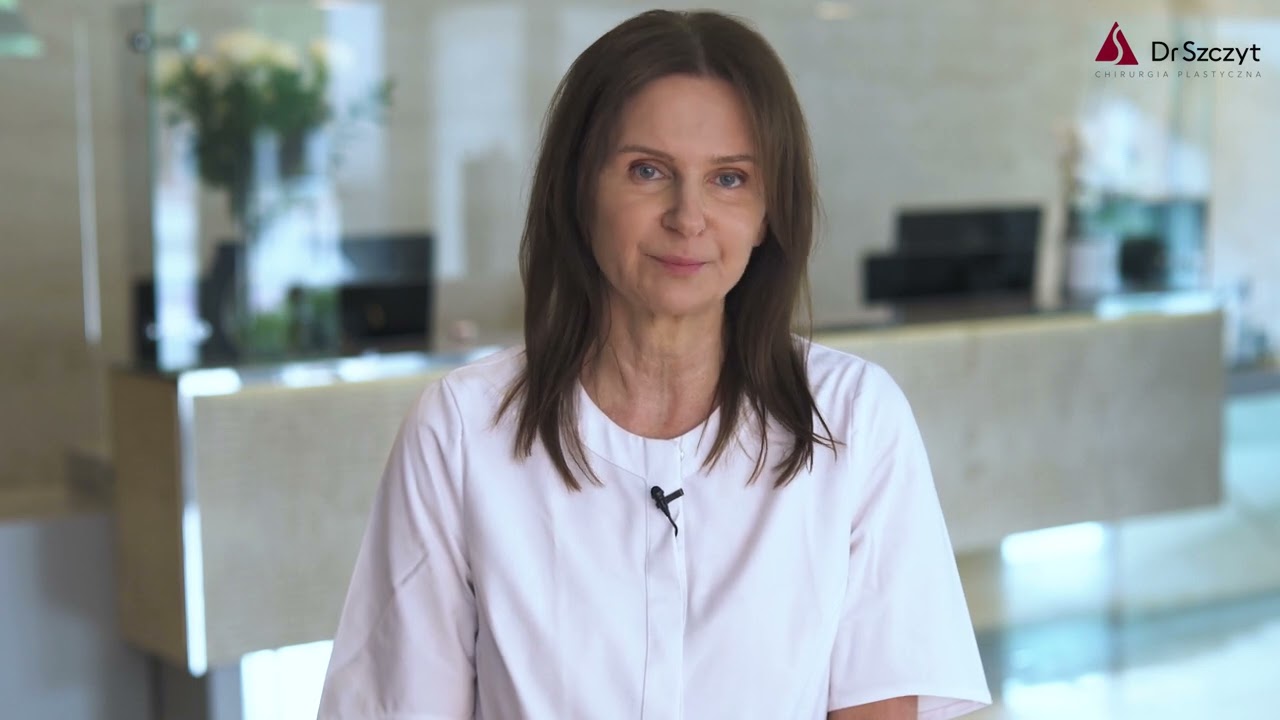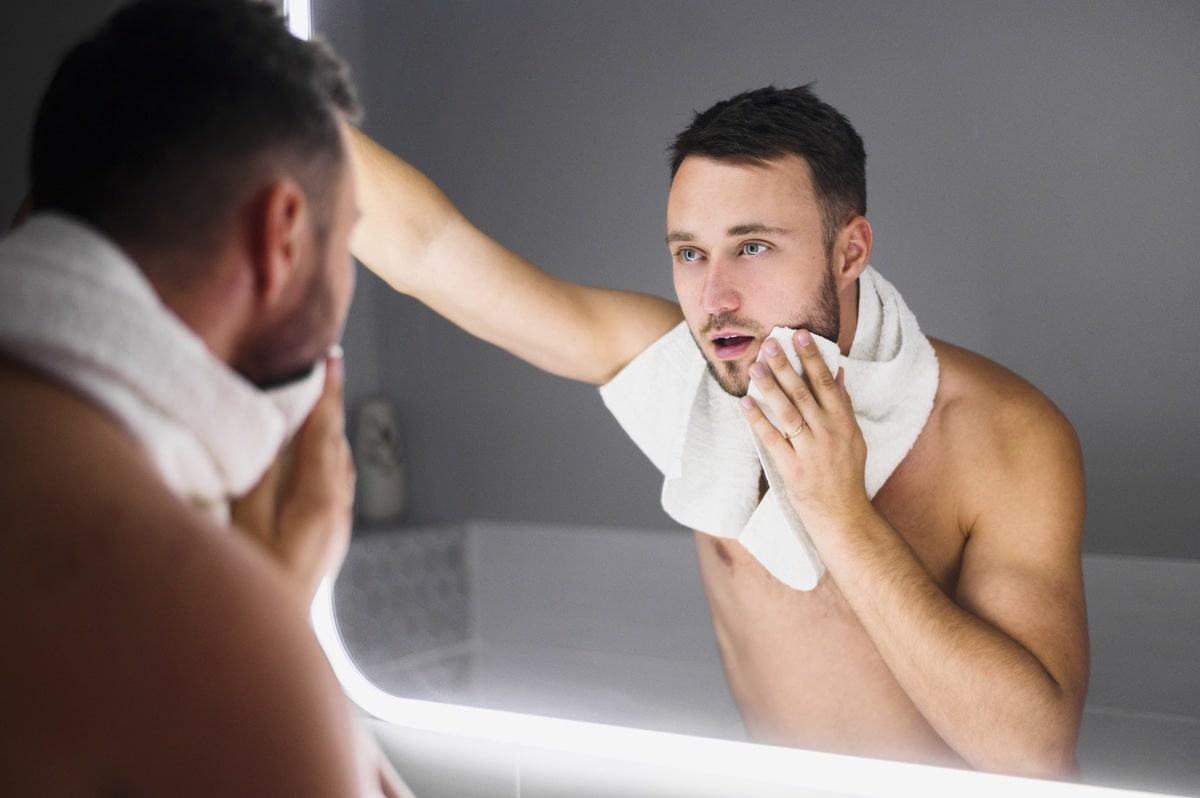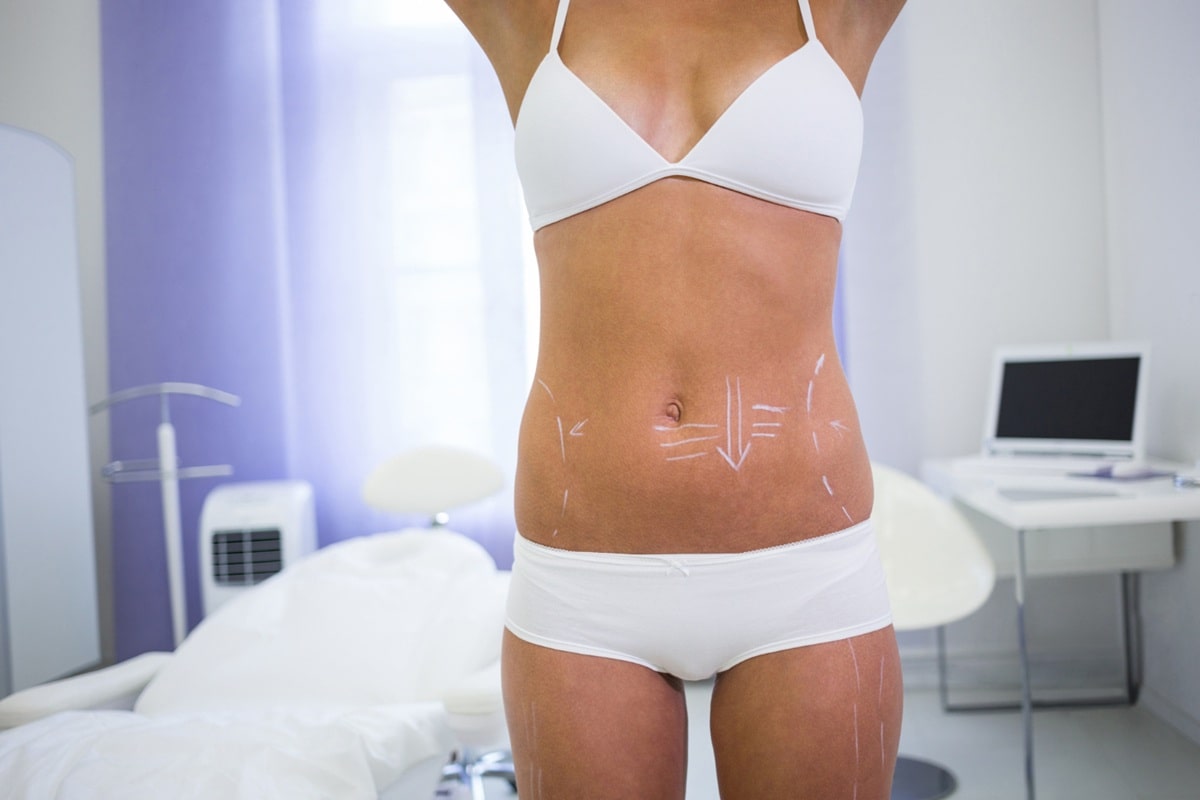How can women effectively deal with androgenetic alopecia?
Author's note
Editorial
Substantive verification
Dr. Aleksandra Rymsza, M.D.
Reading time
13
min.
Published on
February 11, 2025

Androgenetic alopecia in women is a problem that affects not only appearance, but also self-confidence and psychological comfort. Hair loss, severe thinning of the hairstyle or visible scalp clearances are a source of frustration and lower self-esteem. Although the causes of androgenetic alopecia often lie in genes and hormonal management, the good news is that modern aesthetic medicine offers effective methods of dealing with the problem. What are the causes of baldness? What changes are worth making in your daily lifestyle? And most importantly - which therapies really work?
Androgenetic alopecia - definition
Androgenetic alopecia, also known as male pattern baldness, is a chronic condition manifested by progressive thinning and loss of hair. The main mechanism of this process is the hypersensitivity of hair follicles to androgens - hormones like testosterone and its derivative, dihydrotestosterone (DHT). As a result of their effects, hair follicles miniaturize, making hair thinner, shorter and eventually stop growing.
Despite the name, androgenetic alopecia also affects women, although it manifests itself in a slightly different way. The characteristic feature of androgenetic alopecia in women is thinning of the hair on top of the head and in the parting area, while maintaining the hairline above the forehead. In men, the process usually follows a characteristic pattern - it starts with a receding hairline above the forehead and progresses toward the top of the head, leading to the formation of the so-called tonsure, or baldness on the top of the head.
Causes of androgenetic alopecia in women
Women also have androgens, namely the aforementioned testosterone and dihydrotestosterone (DHT), although in much lower concentrations than men. The problem arises when there is excessive production of these, or increased sensitivity of the hair follicles. Therefore, androgenetic alopecia in women often occurs in situations of hormonal imbalance, such as in polycystic ovary syndrome (PCOS), during menopause, when estrogen levels drop and androgens begin to dominate, or as a result of thyroid diseases.
Genetic predisposition to DHT hypersensitivity also plays a role - if there is a family history of androgenetic alopecia, the risk increases. In addition, certain medications and external factors, such as exposure to toxins, also contribute to excessive hair loss.
Effect of lifestyle on androgenetic alopecia
Although genetics plays a key role, lifestyle can significantly affect the course of androgenetic alopecia. Stress is one of the main factors exacerbating the problem - excess cortisol, the stress hormone, disrupts the hair growth cycle, accelerating hair loss.
Is there a solution for this? Regular, moderate physical activity improves blood circulation and hair follicle nutrition, which can benefit hair condition. However, excessive exercise should be avoided, as it can lead to increased androgen levels and exacerbate baldness.
Diet and supplementation in the fight against baldness
A healthy, balanced diet is important in preventing excessive hair loss. It is worth remembering that hair consists mainly of keratin, a type of protein, so an adequate supply of it is essential for its growth and regeneration. Deficiency of iron, zinc or B vitamins also leads to weakened hair and thinning hair.
Therefore, Omega-3 and Omega-6 fatty acids help maintain a healthy scalp and reduce the conversion of testosterone to DHT. Supplementation should always be preceded by consultation with a doctor to avoid over-supply of certain ingredients.
Effective treatments for androgenetic alopecia
Pharmacotherapy in the treatment of alopecia
Pharmacotherapy is an effective method of treating androgenetic alopecia, but it requires an individual approach and close medical supervision. It is important to remember that the effects of treatment appear gradually - usually after several months of regular use of medication. Proper diagnosis, properly selected medications and patience can bring satisfactory results and help women regain thicker, healthier hair. The goal of pharmacotherapy is to inhibit the miniaturization of hair follicles and stimulate the growth of new, healthy hair.
DHT inhibitors and topical preparations that act directly on the scalp are important in therapy. In menopausal women, when estrogen levels drop significantly and androgens begin to dominate, hormone replacement therapy (HTZ) is helpful. Estrogens have a beneficial effect on hair follicles, promoting hair regeneration and growth. Introducing HTZ can help curb hair thinning and improve hair condition.
Needle mesotherapy - an effective method to help regenerate hair follicles
Needle mesotherapy is one of the most effective and widely used methods to help treat androgenetic alopecia in women. The treatment involves microinjections into the scalp, during which specially selected vitamin cocktails, minerals, amino acids and hair growth stimulants are introduced. Thanks to this technique, the active ingredients reach the hair follicles directly, which significantly increases their effectiveness compared to the use of classic shampoos, conditioners and ampoules.
What's more, during the treatment, microcirculation is stimulated through micro-punctures in the skin. Improved blood flow in the scalp ensures better oxygenation of the hair follicles and an increased supply of nutrients. As a result, the follicles become more active and hair grows stronger and healthier.
Microneedling also triggers the skin's natural regenerative processes. There is an activation of fibroblasts responsible for the production of collagen and elastin - proteins that support a healthy scalp structure. Improved skin condition translates into a healthier environment for hair follicles, which promotes hair regrowth.
Depending on the needs of the patient and the condition of the scalp, needle mesotherapy may be used:
- Ready-made vitamin and mineral cocktails - contain diverse nutrients that promote hair growth and regeneration of hair follicles;
- preparations containing biomimetic peptides - these peptides mimic the body's natural processes, stimulating new hair growth and inhibiting hair loss,
- minoxidil-based drugs - in some cases minoxidil is added to the cocktail to further enhance the hair growth stimulation effect,
- Platelet-rich plasma (PRP) - some mesotherapy techniques use plasma obtained from the patient's blood, which further promotes the regeneration of hair follicles.
- Stem cells extracted from the skin - this is a procedure using autologous transplantation of cells derived from the hair follicle area. Through a calibrated mechanical process and filtration, we obtain a high concentration of so-called progenitor (precursor) cells, capable of tissue regeneration.
Mesotherapy is a safe and minimally invasive method that does not require a long recovery period. It can be used as an adjunct to pharmacotherapy or other treatments such as platelet-rich plasma or hair transplantation. At Dr Szczyt 's clinic, we prefer autologous methods, that is, using the patient's own tissues and natural regenerative processes. I most often carry out treatments using platelet-rich plasma and, in line with the latest scientific advances, stem cells. The latter method yields excellent results in the treatment of androgenetic alopecia and in many cases allows to replace other forms of therapy, such as pharmacotherapy. Both treatments are minimally invasive. - Aleksandra Rymsza, MD, PhD
Read also: What do changes in appearance indicate? The body says more than you think
Platelet-rich plasma (PRP) - a natural method of stimulating hair restoration
Platelet-rich plasma (PRP, Platelet-Rich Plasma) is an advanced yet natural treatment for androgenetic alopecia that uses the body's own resources to regenerate and stimulate hair growth. The treatment involves injecting under the scalp plasma obtained from the patient's blood, which is rich in platelets and growth factors that are important in the process of cell regeneration. Platelets, contained in the plasma, are a carrier of many growth factors that accelerate the regeneration of damaged hair follicles. Since the anagen, or active growth, phase is the most important in the hair's life cycle, platelet-rich plasma prolongs this phase, making hair grow longer and thicker. This reduces the number of hairs in the telogen (resting) phase, which reduces hair loss.
After just a few sessions, a marked decrease in the amount of hair loss is noticeable, indicating that the miniaturization of hair follicles has been effectively inhibited. Hair becomes stronger, thicker and resistant to damage. In addition, thanks to improved scalp nutrition, more new hair appears, which increases the volume of the hairstyle, and thanks to the stimulation of microcirculation and increased production of collagen and elastin, the skin becomes better nourished, healthier and more elastic.
PRP therapy can be used alone or as an adjunct to pharmacotherapy and other treatments, such as needle mesotherapy or hair transplantation. For optimal results, a series of 3-6 treatments at 4-6 week intervals is recommended. Then, to maintain the effects, it is advisable to have reminder treatments every few months, depending on the individual needs of the patient and the rate of hair growth.
Regenera Activa is a specially designed system using autologous cell transplantation. Through a calibrated mechanical process and filtration, it allows to obtain a high concentration of so-called progenitor (precursor) cells, capable of tissue regeneration. During the procedure, one to three skin sections with a diameter of 2.5 mm are taken. The collection site is the neck area, at the hairline, as this area is the least prone to androgenetic alopecia. The process is painless, as the collection site is anesthetized with lidocaine. The collected sections are then placed in a device that prepares a cell suspension. The prepared preparation is injected into the scalp using a needle.
FUE hair transplant - an effective and minimally invasive method to regain hair density
Follicular Unit Extraction (FUE) hair transp lantation is a modern, minimally invasive hair transplantation technique that involves taking individual follicular units (grafts) from the donor area and transplanting them into areas affected by thinning or baldness. Unlike the traditional FUT method, in which a strip of skin is cut out, FUE is less painful, leaves no visible linear scars and provides a quicker return to daily activities.
Precise placement of the transplanted follicular units and proper selection of the direction of hair growth ensures a very natural-looking hairstyle, and thanks to the precision of the FUE method, most of the transplanted grafts successfully take, resulting in a satisfying aesthetic result. Once fully healed, the hair looks healthy and dense.
Recovery time after FUE surgery is much shorter than with traditional methods. The patient can return to daily activities after just a few days, but intense exercise should be avoided for at least a week.
The first effects of hair transplantation can be noticed after just a few weeks, when new hair begins to grow. However, you have to wait about 9-12 months for full results, as the process of hair regrowth is gradual. The new hair grows thicker, stronger and blends in naturally with the rest of the hairstyle. Transplanted hair has the same structure as natural hair and grows at a normal rate. Importantly, they are androgen-resistant because they come from an area that is not prone to androgenetic alopecia. As a result, the effects of the procedure are permanent and the transplanted hair does not fall out.
FAQ
What are the first symptoms of androgenetic alopecia in women?
The first symptoms of androgenetic alopecia in women are thinning hair along the parting and reduced hair density on top of the head. The hair becomes thinner, more brittle and grows back more slowly.
Can androgenetic alopecia be completely cured?
Androgenetic alopecia cannot be completely cured, as it is a genetic and hormonal disorder. However, appropriate treatment, including pharmacotherapy, aesthetic medicine treatments and lifestyle changes, can effectively halt hair loss and improve hair condition.
Can the right diet help with androgenetic alopecia?
Yes, proper diet plays an important role in the fight against androgenetic alopecia. A diet rich in protein, iron, zinc, B vitamins and omega-3 fatty acids supports hair health and can slow hair loss. For nutrient deficiencies, consider supplementation.
How does stress affect androgenetic alopecia?
Stress can aggravate androgenetic alopecia by increasing levels of cortisol, a stress hormone that disrupts the hair growth cycle and accelerates hair loss. Stress reduction and regular physical activity can help curb excessive hair loss.
Can hair cosmetics be used while treating androgenetic alopecia?
Using the right hair cosmetics is an important part of supporting the treatment of androgenetic alopecia. It is advisable to choose gentle shampoos and conditioners without silicones and irritants to strengthen the hair and moisturize the scalp.
How long does it take to treat androgenetic alopecia?
Treatment of androgenetic alopecia is a long-term process and requires regularity and patience. The first results may be visible after 3-6 months of using appropriate methods, but full results usually appear after about 9-12 months.
Does androgenetic alopecia affect women of all ages?
Androgenetic alopecia can occur in women of any age, but it is most common after the age of 30 and during menopause, when there is a hormonal imbalance and a decrease in estrogen levels.














